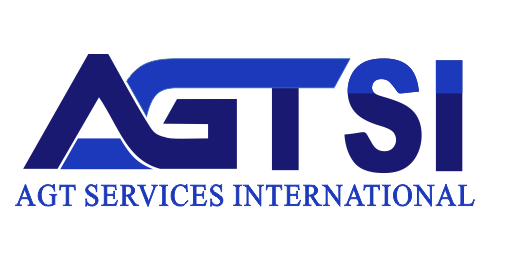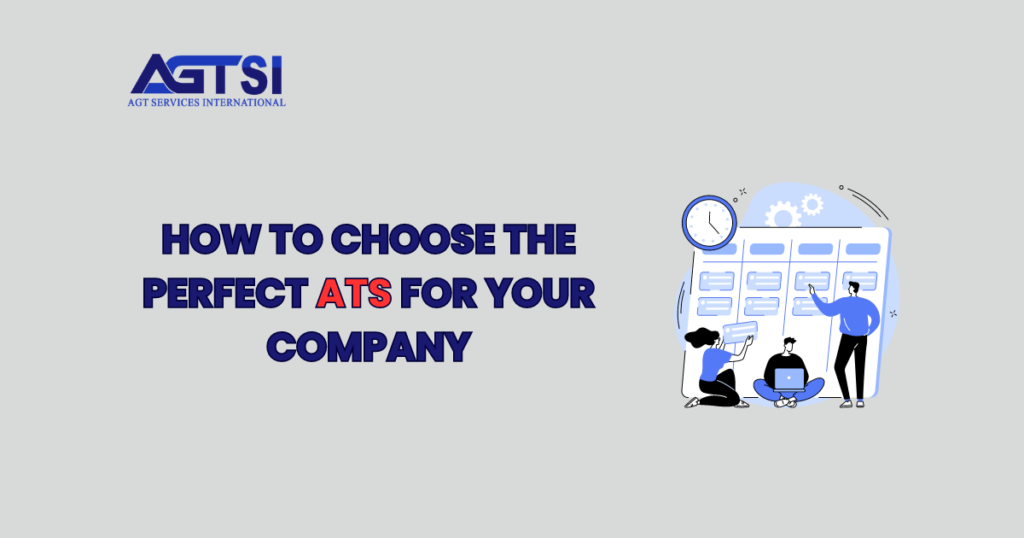Introduction to ATS
Applicant Tracking Systems (ATS) have made hiring easier and faster for companies. Perfect ATS for Company handles job postings, applications, applicant selection, and onboarding. It helps HR professionals save time and stay organized. With features like resume filtering and tracking, ATS quickly finds the best candidates. ATS is essential for efficient and effective hiring in today’s competitive job market.
Importance
ATS is super important for hiring nowadays. It helps save time by doing things like posting jobs and checking resumes automatically. It keeps all candidate info neat and finds the best ones fairly. ATS gives helpful data, follows the law, and makes candidates feel good. It’s a must-have for hiring well and getting great people onboard.
Choose Perfect ATS for Company
1. Define Your Requirements and Objectives
Start by defining what the company wants to achieve with the hiring process and what features the company needs in an ATS. Think about the company size, industry, what other software it needs to work with, and how easy it is to use.
2. Set a Budget
Start by analyzing the company’s needs and challenges, like size, industry, hiring volume, and current recruitment process. Identify main points, such as manual tasks, poor communication, or tracking issues. Then, set a realistic budget, considering initial costs, customization, training, and ongoing support. Make sure the budget allows for essential features and focus on ATS options that fit the company’s financial limits. For example, if a small startup with high hiring needs, look for scalable, cost-effective solutions with strong sourcing and engagement features.
3. Research ATS Providers
Research different Perfect ATS for Company providers to find ones that fit company needs for features, budget, and compatibility. Look at what they offer, their reputation, customer reviews, support, scalability, customization options, and security. Use websites like Capterra and G2, industry forums, and professional networks to get opinions from experts and users. Make a shortlist of potential ATS providers. For example, if a company needs strong reporting and analytics, consider Greenhouse, Workday, or Lever.
Check Features, How It Works, and Support
Before choosing an Applicant Tracking System (ATS), it’s important to thoroughly check its features, understand how it works, and see what kind of support it offers.
1. Features
Look at what it can do, like finding candidates, tracking applications, collaboration tools, reporting, and connections with other software. Make sure these fit what the organization needs.
2. User-friendliness
Is it easy to use and understand? Does it look nice and make sense for both recruiters and candidates?
3. Customization
Can a company change the ATS to match its hiring process? For example, can organizations make special job application forms or add their hiring steps?
4. Integration
Does it work well with other HR systems, like payroll or learning management?
5. Reporting
Can it provide helpful data and tools to aid in company decisions? For instance, can it generate reports on metrics such as time-to-fill for positions or the sources of successful hires?
6. Support
Ask about how quickly ATS providers respond to issues and what kind of help they offer (like phone, email, or chat). It’s good to have providers who are available all the time and have people dedicated to helping the company.
Request Demos and Trials
1. Exploring ATS Options
Begin by requesting demos from Perfect ATS for Company providers to see how their systems work and if they meet company requirements.
2. Asking Questions During Demos
During these demonstrations, inquire about key features such as handling duplicate candidates, automating candidate communication, and ensuring compliance with employment laws.
3. Selecting the Ideal ATS
After reviewing demos and conducting research, choose the ATS that aligns best with the organization’s needs. This decision will enhance the recruitment process and contribute to the organization’s overall success.
4. Gather Feedback from Stakeholders
Involve key stakeholders, including recruiters, hiring managers, and IT personnel, in the evaluation process. Collect feedback on user experience, integration needs, and candidate experience.
5. Consider Long-Term Needs and Scalability
Evaluate each ATS’s ability to meet the organization’s long-term needs and accommodate future growth. Consider scalability, upgrades and updates, and agent stability.
6. Make an Informed Decision
Based on research, demos, feedback, and long-term relations, make an informed decision on the ATS that best aligns with the organization’s needs and objectives. Consider fit for purpose, ROI, contract terms, and performance support.
RECOMENDED: Common Hiring Mistakes in Recruitment
Tips for Successfully Using an ATS
1. Provide Fair Training
Ensure that the team receives comprehensive training on using the Perfect ATS for Company effectively. Training should cover all essential features and functionalities, as well as best practices for optimizing recruitment workflows within the system.
2. Customize to Fit Company Needs
Take advantage of customization options offered by the ATS to tailor the system to the organization’s specific requirements. This may include configuring workflows, adding custom fields, or combining with other tools and systems.
3. Regularly Update And Maintain Data
Keep company ATS up-to-date by regularly entering and updating candidate and job information. This ensures that recruitment data remains accurate and actionable, facilitating informed decision-making.
4. Streamline Communication
Use the ATS to concentrate communication among hiring team members, candidates, and external stakeholders. This helps to maintain clarity, accountability, and consistency throughout the recruitment process.
5. Leverage Reporting and Analytics
Take advantage of the reporting and analytics capabilities of ATS to track key recruitment metrics, identify trends, and measure the effectiveness of hiring efforts. Use these insights to filter strategies and improve outcomes over time.
6. Optimize Candidate Experience
Ensure that the candidate experience remains positive and flawless throughout the application process. Use the Perfect ATS for Company to automate communication, provide timely updates, and gather feedback to improve the candidate journey continuously.
7. Stay Compliant with Regulations
Be aware of and attach to relevant data privacy and employment regulations when using the Perfect ATS for Company. Ensure that recruitment practices, data handling procedures, and candidate communications comply with legal requirements to lighten the risk of non-compliance.
8. Seek Feedback and Continuously Improve
Regularly request feedback from users of the Perfect ATS for Company, including recruiters, hiring managers, and candidates. Use this feedback to identify areas for improvement and implement enhancements to optimize the functionality and usability of the system.
Challenges with ATS
1. Complexity
ATS interfaces can be hard to navigate and require training, leading to inefficiencies.
2. Keyword Reliance
Some ATS rely too heavily on specific keywords, potentially overlooking qualified candidates.
3. Poor Candidate Experience
Automated processes may make candidates feel connected and satisfied.
4. Limited Compatibility
Not all ATS systems work well with other software, causing data transfer issues.
5. Bias
ATS algorithms may unintentionally favor certain candidates, perpetuating discrimination.
6. Technical Issues
Glitches or downtime in ATS systems can disrupt the recruitment process.
7. Volume Overload
Popular job postings may result in an overwhelming number of applications, making it hard to find the right candidates efficiently.
Select ATS for Your Company
1. Greenhouse
Known for its user-friendly interface and robust analytics.
Integrates well with other HR software.
2. Lever
Emphasizes collaboration among hiring teams.
Offers powerful CRM functionalities.
3. Jobvite
Focuses on candidate engagement and recruiting analytics.
Comprehensive suite for the entire recruiting process.
4. BambooHR
Easy-to-use and great for small to medium-sized businesses.
Offers a variety of HR tools beyond just recruiting.
5. Workable
Provides a scalable solution with a large database of job descriptions.
Strong sourcing and screening tools.
6. JazzHR
Affordable and tailored for small businesses.
Customizable workflows and strong candidate management features.
7. iCIMS
Highly customizable and scalable for large enterprises.
Robust reporting and analytics tools.
8. SmartRecruiters
Features collaborative hiring tools and a great user experience.
Strong emphasis on recruitment marketing.
9. Bullhorn
Ideal for staffing agencies with strong CRM integration.
Excellent for managing large volumes of candidates.
10. Recruitee
Highly visual and easy to use.
Great for collaborative hiring and candidate tracking.
11. ApplicantPro
Affordable and user-friendly for small to medium-sized businesses.
Offers a variety of sourcing and screening tools.
12. Breezy HR
Known for its modern interface and ease of use.
Features include video interviewing and automated scheduling.
13. Zoho Recruit
Part of the Zoho suite, great for small to mid-sized companies.
Strong automation and customization options.
14. Workday Recruiting
Integrated with Workday’s HCM system, ideal for large enterprises.
Comprehensive analytics and reporting.
15. SAP SuccessFactors
Suited for large enterprises with global recruiting needs.
Strong integration with other SAP modules.
16. ADP Recruiting Management
Part of ADP’s comprehensive HR suite.
Streamlines hiring processes and integrates with payroll systems.
17. Avature
Flexible and highly customizable.
Excellent for talent management and CRM capabilities.
18. ClearCompany
Great for performance tracking and employee onboarding.
Offers advanced recruitment analytics.
19. CATS
Powerful yet simple to use, especially for recruiting firms.
Good integration capabilities and customer support.
20. JobAdder
Cloud-based with strong CRM features.
Easy integration with job boards and social media.
21. Newton ATS
User-friendly and designed for small to mid-sized businesses.
Offers excellent customer support and onboarding features.
22. Manatal
AI-driven Perfect ATS for Company with intuitive design.
Excellent for both recruiting agencies and internal hiring teams.
23. Freshteam by Freshworks
Simple and effective, part of the Freshworks suite.
Includes employee onboarding and offboarding features.
24. Recruiterbox
Great for collaborative hiring and interview scheduling.
Strong candidate sourcing tools.
25. HireVue
Specializes in video interviewing and assessments.
Integrates well with other ATS platforms.
26. Vincere
Designed for recruitment and staffing agencies.
Features advanced analytics and CRM capabilities.
27. TrackerRMS
All-in-one recruitment and CRM platform.
Excellent for both recruitment and staffing agencies.
28. Teamtailor
Modern and candidate-focused ATS.
Strong emphasis on employer branding.
29. Big Biller
Affordable and easy to use, tailored for small recruiting firms.
Features strong CRM and candidate management tools.
30. Loxo
AI-powered recruitment CRM and ATS.
Focuses on automated sourcing and candidate matching.
Conclusion
Picking the right Applicant Tracking System (ATS) is really important for hiring nowadays. It helps companies save time, stay organized, and follow the rules. Even though it can be tough sometimes, like if it’s too difficult or might pick certain people, there are ways to make it work. First, figure out what the company needs and check out different options. Then, train the team, customize the system, and keep everything up to date. Use it to talk to people, follow how things are going, and make sure everyone applying feels good about it. Just keep following the rules and asking for feedback to make it better, and you’ll be attracting great talent in no time!



















